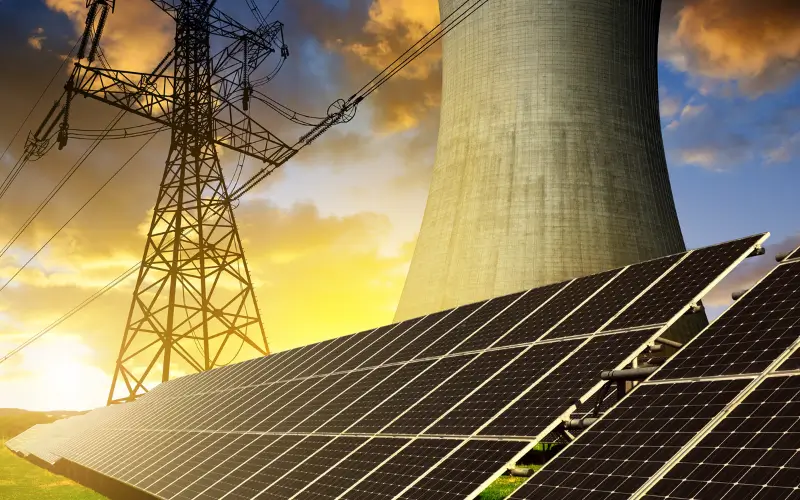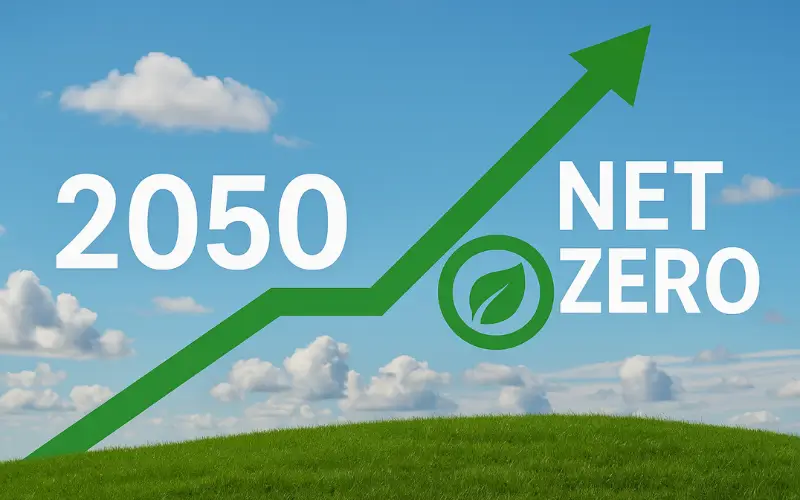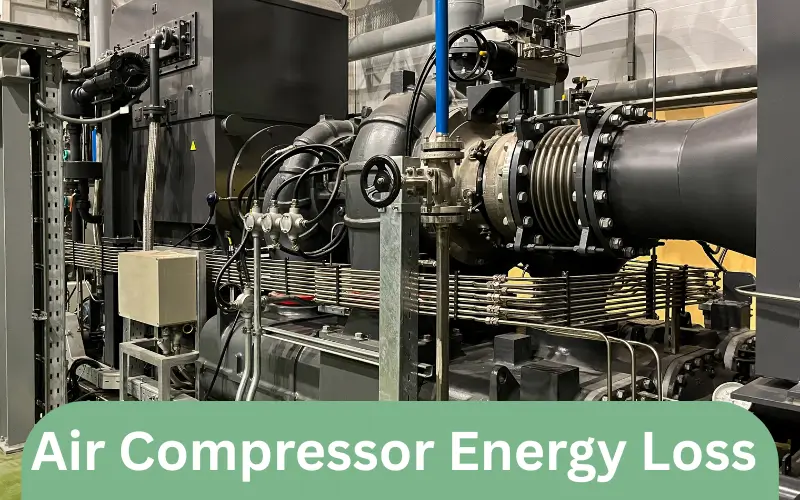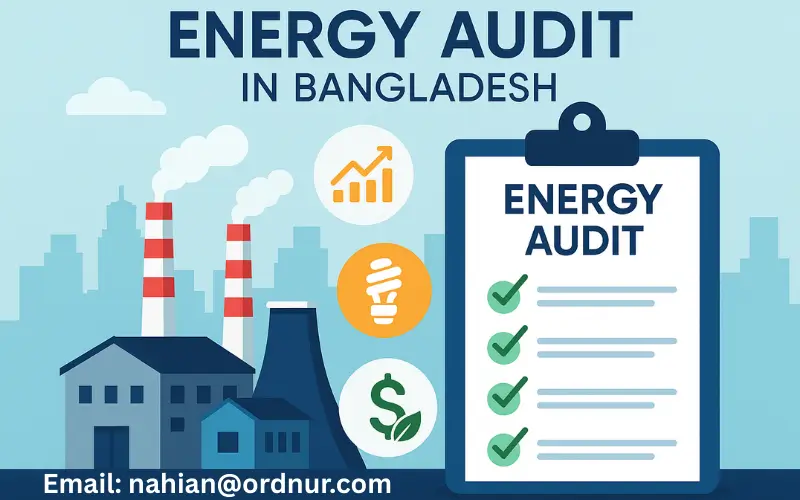The Power Behind the Thread – Bangladesh RMG Sector’s Energy Evolution in 2025
In 2025, energy consumption has become one of the most pressing challenges and transformative opportunities for Bangladesh’s ready-made garment (RMG) sector. As the second-largest garment exporter in the world, the RMG industry is not just a backbone of the country’s economy—it is also one of its most energy-intensive sectors. With more than 4,000 factories employing over 4 million workers and contributing over 80% of national export earnings, how this sector consumes and manages energy holds critical implications for both environmental sustainability and economic resilience.
In recent years, the RMG sector has witnessed a rising tide of global and local pressure to transition toward cleaner, more efficient, and more sustainable energy use. From skyrocketing fossil fuel prices and frequent gas shortages to international regulations demanding low-carbon supply chains, the industry is facing a turning point. Simultaneously, innovative solutions are emerging: rooftop solar installations, LED retrofitting, waste heat recovery systems, and strategic energy management practices are slowly reshaping energy dynamics within factories.
But how far has the sector really come by 2025? What trends are shaping the energy use of RMG factories today? And what strategies are helping them meet energy demands while staying competitive in global markets?
This article explores the energy use trends in Bangladesh’s RMG sector in 2025, breaking down the current consumption patterns, ongoing energy transitions, renewable integrations, challenges, and future strategies. Whether you are a factory owner, sustainability officer, policymaker, or global buyer—understanding the energy story behind each garment is more critical now than ever.
Bangladesh RMG Sector at a Glance
To understand the significance of energy use trends in the ready-made garment (RMG) industry, we first need to appreciate the scale and complexity of the sector itself. Bangladesh’s RMG sector is not only the cornerstone of the national economy—it is also a global powerhouse in apparel manufacturing.
Economic Backbone of Bangladesh
The RMG industry accounts for:
- Over 84% of national export earnings, totaling more than $45 billion in FY 2023–24.
- 10% of Bangladesh’s GDP, making it one of the largest contributors to the national economy.
- 4.5 million jobs, with around 60% of the workforce being women.
This dominance makes the sector extremely influential in driving the country’s economic, social, and energy policies.
Energy-Intensive by Design
Due to its scale and industrial processes, the RMG sector is inherently energy-intensive. According to estimates:
- The sector consumes over 6,000 GWh of electricity annually.
- It contributes to 7–8% of the country’s total electricity demand.
- In some factory operations—especially dyeing, washing, and finishing—thermal energy from gas or diesel accounts for more than 50% of total energy use.
This dependency on both electricity and fossil fuels not only inflates production costs but also exposes the sector to vulnerabilities such as fuel price shocks, gas shortages, and inconsistent power quality.
Factory Profiles and Energy Systems
- Spinning and knitting factories rely heavily on electricity.
- Dyeing and finishing units consume large amounts of thermal energy—typically from natural gas or steam boilers.
- Many large factories operate captive power plants or use diesel generators to supplement unreliable grid supply.
- More progressive factories are investing in rooftop solar systems, LED retrofits, energy-efficient motors, and automation to reduce their energy footprint.
Competitive Pressure for Sustainable Energy Use
Global buyers—especially from the EU and North America—are increasingly prioritizing energy and carbon transparency in sourcing decisions. As a result, RMG factories are now:
- Participating in certified energy audits,
- Pursuing LEED certifications,
- Engaging in renewable energy pilots, and
- Collaborating in initiatives like Partnership for Cleaner Textile (PaCT) and InSPIRE to reduce energy consumption.
In short, the RMG sector in Bangladesh sits at the intersection of industrial ambition and climate responsibility. Its ability to balance production growth with smarter, cleaner energy strategies will shape its trajectory well beyond 2025.
Energy Consumption Patterns in the RMG Industry (2025)
Energy consumption in the RMG sector is not uniform. It varies significantly based on the type of factory, production processes, machinery efficiency, and location. In 2025, this complexity continues to deepen as factories adopt diverse energy mixes, blending grid electricity, captive generation, and renewables.
Understanding how and where energy is used is critical to identifying potential efficiency gains and sustainability strategies.
Electricity vs. Thermal Energy: A Dual Demand
RMG operations require two major forms of energy:
1. Electrical Energy
Electricity powers the machinery for spinning, weaving, sewing, lighting, air conditioning, compressors, and office equipment.
Key facts:
- Electricity accounts for ~45–50% of total energy consumption in most RMG factories.
- High electricity demand is driven by equipment like sewing machines, compressors, chillers, and HVAC systems.
- Energy bills often reflect a base load from lighting and HVAC, with peak loads during production shifts.
Thermal energy is used primarily for dyeing, drying, washing, finishing, and steam generation.
Key sources:
- Natural gas is still the most common thermal energy source.
- Diesel and furnace oil are used as backup fuels or in areas with limited gas access.
- In energy-intensive processes like dyeing, thermal energy use can exceed 60% of a factory’s total consumption.
Energy Breakdown by Process Type
Different manufacturing stages consume energy in different proportions:
| Process | Energy Share | Main Energy Type |
| Spinning | 15–20% | Electrical |
| Knitting/Weaving | 15–20% | Electrical |
| Dyeing/Washing | 30–40% | Thermal (gas, steam) |
| Finishing | 10–15% | Thermal + Electrical |
| Sewing/Garmenting | 10–15% | Electrical |
This breakdown shows that dyeing and washing processes are the most energy-intensive, making them a key focus area for energy-saving interventions.
Per-Unit Energy Consumption (Benchmarking)
The energy required to produce one garment varies based on the product type and process efficiency:
A basic cotton T-shirt may require:
- ~2.7 kWh of electricity
- ~10 MJ of thermal energy
A pair of denim jeans, which goes through multiple wash cycles, may consume:
- ~4–6 kWh of electricity
- ~25–30 MJ of thermal energy
Energy intensity benchmarks are now increasingly used by global buyers to assess a factory’s performance during audits and certifications.
Captive Generation and Backup Systems
Due to ongoing gas and power disruptions, many factories operate captive energy systems:
- Gas-powered generators are common in industrial zones like Gazipur, Narayanganj, and Savar.
- Diesel generators are used during power cuts but are expensive and polluting.
- Hybrid systems combining grid, captive, and solar sources are emerging among large exporters.
While captive systems offer energy security, they also increase operating costs, carbon emissions, and maintenance burdens—making the shift to efficient grid and renewable energy sources more attractive.
National Energy Context & Trends Affecting RMG
The energy landscape in Bangladesh is shifting rapidly in 2025, and the RMG sector sits right at the center of this transformation. From power generation changes to fuel import dynamics and evolving consumption behavior, national energy policies and realities are reshaping how garment factories operate—and survive.
Bangladesh’s Evolving Energy Mix
Over the past decade, Bangladesh has made significant changes to its power generation portfolio:
- Natural gas, once supplying over 66% of total power, has declined to around 59% due to gas field depletion and infrastructure constraints.
- Coal has risen sharply, contributing over 20% of power generation in 2025, largely through new plants like Rampal and Payra.
- Renewables (mainly solar) remain below 4%, though recent growth signals promise.
- Imported LNG is increasingly critical, with long-term purchase deals signed with Shell, BP, and Aramco to ensure supply stability.
For the RMG sector, this mix affects both energy pricing volatility and carbon intensity, impacting buyer relationships and operational costs.
Grid Electricity Demand Trends
Bangladesh’s national power demand crossed 16,000 MW in peak summer 2025, driven largely by:
- Residential cooling demand during intense heatwaves.
- Irrigation loads in rural areas.
- Urban growth and electrification of transport.
While industrial demand has grown more slowly, RMG factories remain major electricity users, especially in urban peripheries (Savar, Gazipur, Narayanganj).
Key implications:
- Grid reliability remains a concern, particularly during peak hours.
- Frequent load shedding in industrial belts disrupts production.
- Voltage fluctuations damage energy-efficient machinery, shortening equipment life spans.
Nuclear and Renewable Capacity Expansions
Roop- pur Nuclear Power Plant
- Bangladesh’s first nuclear power plant, Rooppur (2.4 GW), is expected to be operational by late 2025.
- This could significantly improve grid capacity and stability, potentially benefiting large RMG clusters.
Solar and Wind Integration
- Solar capacity is growing, with over 1,000 MW installed by mid-2025, mainly through utility-scale farms and rooftop projects.
- Wind remains nascent; the country’s first 60 MW commercial wind project began operations in 2024 in Cox’s Bazar.
However, renewable integration is slow due to:
- Limited land availability,
- Grid absorption issues,
- Policy and investment hurdles.
LNG Imports and Gas Pricing
To address the shortfall in domestic gas production, Bangladesh is ramping up LNG imports:
- Floating storage and regasification units (FSRUs) are being expanded.
- Global LNG price volatility (post-COVID and geopolitical disruptions) continues to affect domestic gas prices.
- Industrial users—including RMG factories—face higher gas tariffs and inconsistent pressure, especially during peak production hours.
Factories reliant on thermal processes (dyeing, washing, finishing) are most affected.
Subsidy Reductions and Energy Pricing Reforms
In line with IMF policy reform packages, Bangladesh is gradually reducing subsidies on gas and electricity. This has led to:
- Tariff hikes in both grid and piped gas supply to industries.
- Pressure on RMG manufacturers to optimize energy use or face eroding profit margins.
- Growing interest in energy-efficient machinery, solar offsets, and thermal insulation.
Energy Efficiency & Renewable Initiatives in RMG
In 2025, the Bangladesh RMG sector is undergoing a slow but notable transformation toward cleaner and smarter energy practices. Rising fuel prices, global compliance requirements, and operational inefficiencies have pushed manufacturers to explore both energy efficiency (EE) and renewable energy (RE) solutions.
Forward-looking factories are no longer just investing in machines—they’re investing in how those machines are powered. Here’s a closer look at the initiatives shaping this transformation.
Solar Energy Adoption in RMG Factories
Rooftop Solar Projects
- Bangladesh’s garment factories are increasingly embracing rooftop solar power under the net metering policy launched in 2018.
- In 2025, more than 250 factories have installed rooftop solar panels, totaling over 45 MW in combined capacity.
Case Study: Pacific Jeans Ltd.
- Installed a 32.7 MW rooftop solar system—the largest in South Asia for a single industrial unit.
- It generates nearly 30% of the factory’s total electricity demand, saving thousands of tons of CO₂ annually.
Benefits of Solar for RMG:
- Reduces dependency on grid and gas-based power.
- Lowers energy bills and carbon footprint.
- Improves factory ratings during buyer audits (especially for LEED or GOTS certification).
Energy Efficiency Technologies and Practices
Efficient energy use is now viewed as a low-hanging fruit for immediate savings. The most commonly adopted solutions include:
1. LED Lighting Retrofits
- Replacing traditional lights with LED fixtures can cut lighting energy use by 50–70%.
- A single factory retrofitting 10,000 lights saved ~119 tons of CO₂ emissions per year.
2. Variable Frequency Drives (VFDs)
- VFDs control motor speed based on real-time demand.
- They reduce electricity use by 20–35% in air compressors, pumps, and fans.
3. Heat Recovery Systems
- Factories now install systems that reuse exhaust heat from boilers or dyeing units to preheat water.
- These systems cut thermal energy demand and gas consumption significantly.
4. Building Insulation & Daylight Harvesting
- Roof insulation and skylight installations reduce HVAC loads.
- Several factories have reported 10–15% overall energy savings through basic architectural improvements.
5. Smart Monitoring and IoT
- Use of real-time energy management systems and AI-based monitoring tools.
- These help track excessive energy use, equipment inefficiencies, and peak demand patterns.
Factory-Level Success Stories
AR Jeans Producer Ltd.
- Implemented a full EE retrofit including VFDs, LED lighting, and smart metering.
- Achieved 13% reduction in electricity consumption and 26% reduction in thermal energy.
Karupannya Rangpur Ltd.
- Combined rooftop solar, steam insulation, and efficient boilers.
- Result: over 40% overall energy savings within 18 months.
Policy, Finance & Industry-Led Programs
InSPIRE (Integrated Support for Sustainable Energy in the RMG Sector)
- A public-private partnership program promoting energy transition in the apparel sector.
- Offers technical assistance, policy advocacy, and matchmaking with financiers.
Green Factory Certification Incentives
- LEED-certified factories enjoy preferential sourcing from brands like H&M, M&S, and Uniqlo.
- Energy efficiency is a key pillar in achieving these certifications.
Financing and Barriers
Despite potential, adoption remains slow due to:
- High import duties on solar and energy-efficient equipment.
- Lack of awareness and technical expertise in smaller factories.
- Limited access to low-interest green loans.
Some large banks and donor-funded projects are beginning to offer dedicated green finance tools, but scale remains a challenge.
Circular Thinking: Waste-to-Energy Concepts
- A few progressive manufacturers are exploring biomass boilers, fabric scrap incineration, and steam recycling.
- While not yet widespread, these approaches reflect the next frontier of energy sustainability.
Global & Market Pressures Driving Energy Transition
While internal operational costs and local energy disruptions are critical, it is external market forces that are now accelerating the energy transition in Bangladesh’s RMG sector. In 2025, global buyers, sustainability regulations, and evolving consumer expectations are forcing manufacturers to rethink how they use energy—not just to save money, but to stay in business.
Buyer Expectations: Energy Use as a Sourcing Criterion
Global apparel buyers are increasingly requiring environmental transparency from their suppliers. Key areas of focus include:
- Carbon emissions per product (kg CO₂e per garment or per kg fabric)
- Factory energy mix (renewable vs. non-renewable sources)
- Energy efficiency certifications (e.g., ISO 50001, LEED, GOTS)
- Public disclosure via platforms like Higg Index and CDP
Brands like H&M, Zara, Uniqlo, and M&S now consider energy metrics part of their sourcing scorecards. For factories in Bangladesh, energy optimization has evolved from a cost-saving tactic into a competitive survival tool.
EU Green Deal & Due Diligence Regulations
1. EU Green Deal (Climate Neutral by 2050)
- The EU is Bangladesh’s largest garment export destination.
- Under the Green Deal, imported products must meet low-carbon and eco-design standards.
Factories will need to show:
- Energy source transparency
- Carbon footprint reporting
- Resource efficiency (energy, water, chemicals)
2. Corporate Sustainability Due Diligence Directive (CS3D)
- Effective in phases from 2026, CS3D mandates EU companies to ensure their supply chains do not violate environmental or human rights standards.
- Energy-related violations (e.g., pollution, unsustainable fuel use) may lead to buyer disengagement.
Extended Producer Responsibility (EPR) Requirements
Under EPR regulations, global brands are now accountable for the full lifecycle impact of their garments—including production emissions. This pushes them to:
- Prioritize low-energy, low-impact factories
- Work only with certified energy-efficient suppliers
- Offer long-term contracts to green factories
Factories that fail to align risk losing orders—or being permanently excluded from compliance-driven buyer lists.
Benchmarking Against Competitor Countries
Bangladesh is no longer competing only on price. In 2025, it must also compete on sustainability and energy innovation.
| Country | Energy Initiatives |
| Vietnam | Industrial solar parks, green zone tax incentives |
| India | National solar rooftop mission, green PLI schemes |
| Turkey | Full-scale net metering, factory carbon pricing |
| Bangladesh | Rooftop solar pilots, donor-backed EE initiatives (limited scale) |
Without aggressive policy support and mass adoption of renewables, Bangladesh risks falling behind.
Shifting Consumer Values
A growing segment of consumers—especially Gen Z and millennials—demand sustainable fashion. They are willing to pay more for:
- Low-carbon clothing
- Green factory tags
- Sustainably sourced textiles
Global brands are responding by placing pressure on their suppliers to decarbonize quickly, starting with energy reforms.
Challenges & Barriers in 2025
Despite notable progress, the road to sustainable energy in Bangladesh’s RMG sector is still filled with significant obstacles. In 2025, manufacturers continue to face technical, financial, infrastructural, and policy-level barriers that hinder large-scale adoption of energy-efficient and renewable solutions.
Understanding these challenges is crucial for developing targeted interventions and policy reforms.
Infrastructure & Fuel Supply Constraints
1. Chronic Gas Shortages
- Natural gas, which powers most boilers and captive plants, remains unreliable and inconsistent.
- Gas pressure is often too low during peak hours, especially in Dhaka, Gazipur, and Narayanganj industrial zones.
As a result, factories:
- Suffer production delays,
- Overcompensate with diesel, and
- Experience high energy costs.
2. Illegal and Hazardous Gas Alternatives
- Due to pipeline shortages, some factories use LPG cylinders (unofficially) as a workaround.
- This increases fire and explosion risks, raises operational costs, and violates safety codes.
3. Grid Instability
- Grid electricity is often unreliable, with load shedding and voltage fluctuations damaging sensitive energy-efficient machinery.
- Many factories report that advanced equipment with a life expectancy of 10–15 years breaks down within 2–3 years due to power quality issues.
Financial Barriers & Lack of Access to Green Finance
1. High Upfront Investment
- EE and RE technologies require high capital expenditure, which many factories—especially SMEs—cannot afford.
- Example: A rooftop solar installation for a mid-sized factory can cost $150,000–250,000, often requiring loans.
2. Limited Green Financing Options
- Most banks lack dedicated green financing products tailored to RMG factories.
- When loans are available, interest rates are high, and documentation requirements are complex.
3. Payback Period Uncertainty
Many factory owners are reluctant to invest in new technology with a 3–6 year payback, especially in a volatile export environment.
Regulatory Gaps and Policy Challenges
1. Import Duties on Green Tech
- Energy-efficient equipment (solar panels, inverters, VFDs, sensors) still faces high import duties and taxes.
- This reduces the economic viability of EE projects, even if technically sound.
2. Absence of Binding Sector Targets
- Unlike some competitor countries, Bangladesh has no sector-wide energy reduction or renewable adoption mandate for the RMG industry.
- Without targets, monitoring, or enforcement, adoption remains voluntary and fragmented.
3. Lack of Technical Support & Awareness
- Many factory managers are unaware of energy-saving technologies or lack technical capacity to implement solutions.
- There is also a shortage of skilled professionals for conducting reliable energy audits and system designs.
Space & Scalability Constraints
Rooftop solar systems are limited by:
- Vertical factory designs with small roof areas,
- Structural limitations (rooftops not designed for heavy panel loads),
- Shading issues in crowded industrial zones.
- Off-site solar parks require land, which is expensive and limited in industrial belts.
Inconsistent Buyer Incentives
While global buyers demand sustainability, their support varies:
- Some offer long-term contracts, price premiums, or co-investments for green upgrades.
- Others still prioritize lowest-cost sourcing, sending mixed signals to factory owners.
Outlook & Strategic Path for 2025 and Beyond
As 2025 progresses, the energy transformation of Bangladesh’s RMG sector stands at a pivotal juncture. Forward-looking factories are already moving beyond survival to strategic alignment with global climate goals, while others risk being left behind. The road ahead demands innovation, collaboration, and bold policy action.
Industry Priorities Moving Forward
1. Integrating Energy into Core Business Strategy
- Energy efficiency is no longer just a cost-saving tool—it’s part of brand positioning, buyer acquisition, and supply chain resilience.
- Smart factories are appointing Energy Managers, creating energy KPIs, and linking performance to incentives.
2. Moving Toward Carbon Accounting
Leading factories are shifting from just monitoring energy consumption to tracking carbon emissions per process, per unit, and per order.
Carbon accounting helps:
- Win climate-conscious buyers
- Prepare for carbon border taxes
- Participate in emissions trading markets (in the future)
3. Diversifying the Energy Portfolio
Hybrid models combining:
- Grid + Solar
- Gas + Heat Recovery
- Solar + Battery Storage
- AI-optimized EMS (Energy Management Systems)
This mitigates fuel volatility while increasing energy autonomy.
Strategic Recommendations
For Factories
- Conduct periodic energy audits (preferably certified by SREDA or IDCOL)
- Set annual energy intensity reduction targets (kWh/kg or MJ/garment)
- Pursue green certifications like ISO 50001, EDGE, LEED, and ZDHC
- Explore donor-backed financing (e.g., IDCOL’s RE funds, GCF grants)
For Policy Makers
- Zero-duty import of certified EE and RE technology
- Create a Green Tech Fund accessible to SMEs
- Launch nationwide EE benchmarks for textile categories
- Invest in industrial solar parks with leasing options for clusters
For Buyers & Development Partners
- Offer performance-based financing or long-term contracts for green factories
- Support capacity building for factory managers and energy staff
- Fund pilot programs for smart EMS, low-temperature dyeing, and solar integration
Vision 2030: Net-Zero Ready Supply Chain
If strategic steps are taken today, Bangladesh can position its RMG industry as a net-zero-ready hub by 2030, characterized by:
- Near-zero energy waste
- Circular water-energy nexus
- AI-driven energy orchestration
- Integration of solar, biogas, and storage at scale
- Globally recognized for low-carbon fashion
Conclusion
The energy landscape of Bangladesh’s ready-made garment (RMG) sector in 2025 is at a crossroads. As one of the largest contributors to the country’s economy and exports, the sector faces mounting pressure to balance rapid industrial growth with sustainable and efficient energy use. Rising energy costs, unreliable fuel supply, and increasing global buyer demands are driving a transformative shift toward energy efficiency and renewable adoption.
While significant challenges remain—from infrastructural limitations to financing gaps—the strides made in rooftop solar, energy audits, and innovative efficiency technologies demonstrate a promising path forward. Success will depend on the collective efforts of factory owners, policymakers, financiers, and global buyers to foster a green, resilient, and competitive RMG industry.
By embracing energy innovation and aligning with evolving global market requirements, Bangladesh’s garment sector can secure its position as a leader in sustainable apparel manufacturing—not just for 2025 but for decades to come.




